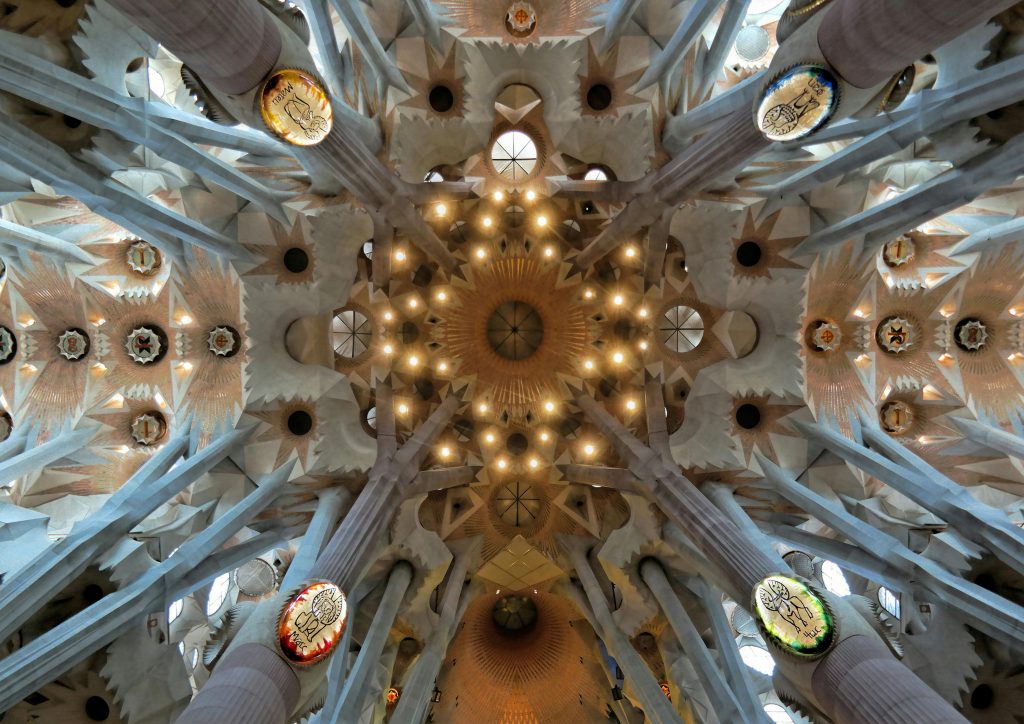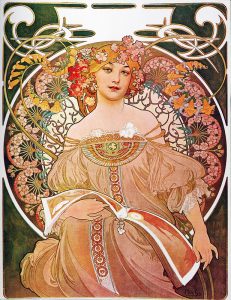
Introduction to Art Nouveau in Spain
Art Nouveau, known as Modernismo in Spain, emerged as a vibrant and influential artistic movement in the late 19th and early 20th centuries. Characterized by its flowing lines, organic forms, and intricate details, Art Nouveau sought to break away from traditional artistic conventions and embrace a more natural and free-spirited approach. In Spain, this movement found fertile ground, resulting in a unique and diverse body of work that continues to captivate art enthusiasts and historians alike.
Spain’s interpretation of Art Nouveau was heavily influenced by the broader European movement, yet it developed its own distinct characteristics. The country’s rich cultural heritage, combined with the innovative spirit of its artists and architects, produced a version of Art Nouveau that was both deeply rooted in tradition and strikingly modern. This article explores the key aspects of Art Nouveau in Spain, highlighting its architectural marvels, notable artists, and lasting impact on the nation’s cultural landscape.
The Architectural Marvels of Modernismo
One of the most prominent expressions of Art Nouveau in Spain is found in its architecture. Catalonia, particularly Barcelona, became the epicenter of this architectural renaissance, with Antoni Gaudí emerging as the most celebrated figure. Gaudí’s masterpieces, such as the Sagrada Família, Casa Batlló, and Park Güell, exemplify the movement’s fascination with organic forms and intricate designs. His use of colorful mosaics, undulating surfaces, and natural motifs set a new standard for architectural innovation.
Beyond Gaudí, other architects also left their mark on Spain’s urban landscape. Lluís Domènech I Montaner, for instance, designed the Palau de la Música Catalana and Hospital de Sant Pau, both UNESCO World Heritage Sites. These buildings showcase the lavish ornamentation and elaborate craftsmanship typical of Art Nouveau, blending Gothic and Moorish influences with modernist aesthetics. The architectural achievements of this period not only transformed the skylines of Spanish cities but also established a legacy of creativity and artistic expression.

The Influence of Catalonia
Catalonia played a pivotal role in the development of Art Nouveau in Spain. The region’s economic prosperity and cultural dynamism at the turn of the century created an environment conducive to artistic experimentation. Barcelona, in particular, became a hub for modernist architects, designers, and craftsmen who sought to create a distinct Catalan identity through their work.
This cultural movement, known as the Renaixença (Catalan Renaissance), aimed to revive Catalan culture and language. Art Nouveau became a vehicle for expressing this regional pride, blending traditional Catalan elements with modernist principles. The result was a unique style that resonated deeply with the local population and contributed to the broader European Art Nouveau movement.
Notable Artists of the Spanish Art Nouveau
While architecture often takes center stage in discussions of Art Nouveau, the movement also flourished in other artistic disciplines. Painters, sculptors, and graphic artists contributed to the rich tapestry of Spanish Modernismo. One such artist was Ramón Casas, whose portraits and genre scenes captured the essence of modern life in late 19th and early 20th century Spain. His works, often characterized by their elegant simplicity and keen observation, reflect the sophisticated urban culture of the time.
Another prominent figure was Santiago Rusiñol, a multifaceted artist known for his paintings, writings, and theatrical productions. Rusiñol’s works often depicted idyllic landscapes and scenes of everyday life, infused with a sense of poetic nostalgia. His contributions to the Art Nouveau movement extended beyond visual art, influencing the broader cultural milieu through his literary and theatrical endeavors.
Decorative Arts and Design
Art Nouveau’s influence extended into the realm of decorative arts and design, permeating everyday objects and interiors. Spanish artisans embraced the movement’s aesthetic principles, producing furniture, ceramics, glassware, and textiles that echoed the organic forms and intricate details of Modernismo. The workshop of Gaspar Homar, for instance, became renowned for its exquisite furniture designs, which combined traditional craftsmanship with innovative artistic motifs.
Ceramics and glassware also saw a transformation under the influence of Art Nouveau. Companies like La Fábrica de Cerámica de la Bisbal and the glassworks of Lluís Rigalt produced items that were both functional and decorative, characterized by their flowing lines and vibrant colors. These decorative arts not only enhanced the beauty of everyday objects but also brought the spirit of Art Nouveau into the homes of ordinary Spaniards.
The Role of Literature and Theatre
Literature and theatre played significant roles in the dissemination and development of Art Nouveau ideas in Spain. Writers and playwrights like Joan Maragall and Àngel Guimerà were instrumental in promoting modernist themes through their works. Maragall’s poetry, imbued with a deep sense of spirituality and connection to nature, resonated with the ideals of the Art Nouveau movement. His writings often explored the tension between tradition and modernity, reflecting the broader cultural shifts of the period.
In the realm of theatre, Àngel Guimerà’s plays captured the complexities of Catalan society, blending realism with poetic elements. His works often addressed social issues and personal struggles, providing a platform for exploring contemporary concerns through the lens of modernist aesthetics. The intersection of literature and theatre with Art Nouveau enriched the cultural landscape of Spain, fostering a holistic and multifaceted artistic movement.
The Legacy of Art Nouveau in Spain
The legacy of Art Nouveau in Spain is enduring and multifaceted. The movement left an indelible mark on the country’s architectural heritage, with many of its masterpieces now recognized as UNESCO World Heritage Sites. These buildings continue to attract visitors from around the world, serving as a testament to the creative genius of their designers and the cultural vibrancy of the era.
Beyond architecture, the influence of Art Nouveau is evident in the continued appreciation for decorative arts and design from this period. Museums and private collections showcase the intricate craftsmanship and artistic innovation that characterized Spanish Modernismo. The movement also paved the way for subsequent artistic developments, laying the groundwork for the avant-garde movements of the early 20th century.
Conclusion
Art Nouveau in Spain, or Modernismo, represents a golden age of artistic expression that continues to inspire and captivate. From the architectural wonders of Gaudí and Domènech i Montaner to the evocative paintings of Casas and Rusiñol, the movement embodied a spirit of innovation and creativity that left a lasting legacy. Through its synthesis of traditional elements and modernist principles, Spanish Art Nouveau created a unique and enduring cultural heritage that remains a source of pride and inspiration.



